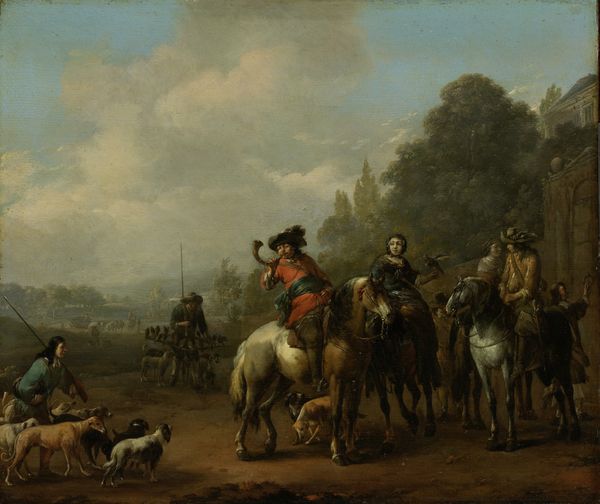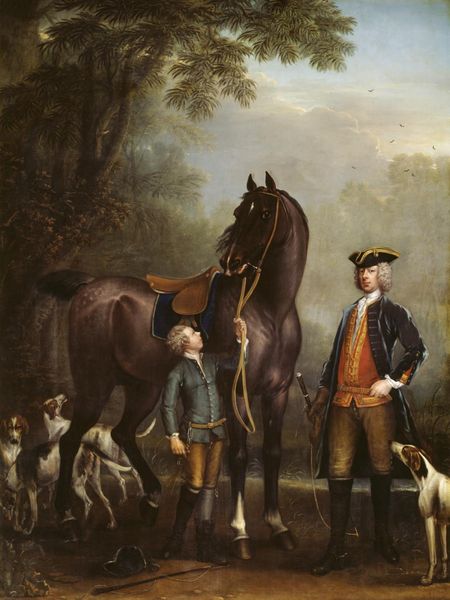
Dimensions: support: 1060 x 1556 mm
Copyright: CC-BY-NC-ND 4.0 DEED, Photo: Tate
Curator: John Wootton, active in the first half of the 18th century, likely painted this piece, "Lady Mary Churchill at the Death of the Hare," sometime during his career, rendered on a canvas of just over a meter high. Editor: The scene feels immediately celebratory, albeit tinged with a certain melancholy. It’s all wide open sky, rolling hills, and a large assembly of figures. Curator: The work is a fascinating commentary on gender and power, as we see Lady Mary positioned centrally on her white horse. The "death of the hare" becomes a symbol of aristocratic privilege and the gendering of leisure activities. Editor: Hunting imagery almost always evokes notions of dominance. The hare, so often a symbol of vulnerability, meets its end. The dogs form a semi-circle around the fallen animal, their postures suggesting fulfillment. Curator: Absolutely, and we can also read this through a lens of class. The painting normalizes the relationship between the ruling classes and the natural world, and it reflects a very specific hierarchy. Editor: It’s hard to ignore the painting's connection to traditional displays of power and status, but also the complex meanings that can be extracted from this seemingly simple scene.
Comments
tate 7 months ago
⋮
http://www.tate.org.uk/art/artworks/wootton-lady-mary-churchill-at-the-death-of-the-hare-t02378
Join the conversation
Join millions of artists and users on Artera today and experience the ultimate creative platform.
tate 7 months ago
⋮
The young lady mounted on a grey mare is thought to be Lady Mary Churchill, the illegitimate daughter of the late Prime Minister, Sir Robert Walpole. She watches as the hounds form a circle around the hunt servant, who ceremonially presents the dead hare. Wootton was the first distinguished native sporting artist. He was greatly admired in his time for his ability to paint horses and for his decorative landscapes and battle-scenes. His hunting subjects, such as this, gave patrons an opportunity to be shown in an informal manner, more akin to the contemporary ‘conversation piece’ portrait groups. Gallery label, September 2004













